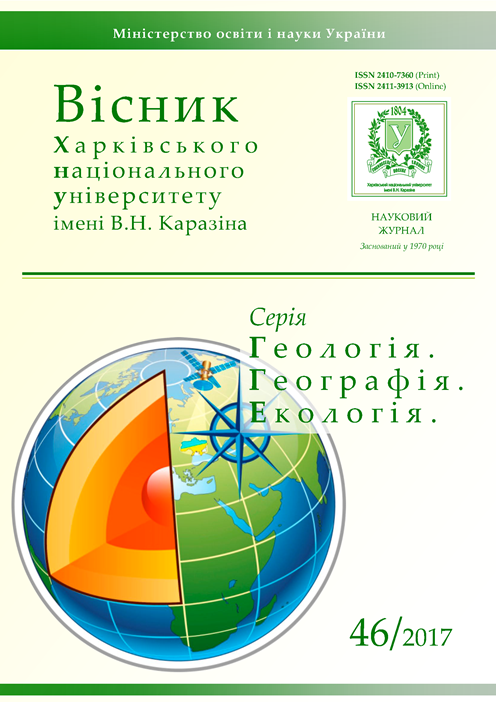New approach to crude oil classification problem
Abstract
Formulation of the problem. The problem of crude oil classification has existed since the beginning of oil production. Presently, there is a lot of available information about chemical composition and physical-chemical properties of crude oil found in various petroleum- bearing regions around the world, however, the problem with oil typification still exists and there is no uniform classification. Primarily, this is connected with significant differences in chemical composition of oil and absence of a proven set of key criteria that such classification can be based on.
The available classifications can be relatively divided into three categories: chemical, genetic and process. However, there is no classification that would approach oil regarding its production problems. When choosing a recovery technique and development strategy for a particular oil deposit, one has to refer to several classifications simultaneously and, in some cases, one classification may contradict another.
The aim of the investigation. To develop a new industrial crude oil classification.
Methods. In order to determine the key factors affecting physical and chemical properties of oil, 150 oil reservoirs of Dnieper-Donets basin containing oil with various composition have been studied using well operation and testing data.
Results. Obtained results have confirmed the relationship between the three key oil content components - asphaltenes and waxes, sulfur and resins, which affect specific physical-chemical properties of oil. None of the existing classifications account for this relationship, nor they take into consideration quantitative correlation of such components.
Scientific novelty and practical significance. Based on the relationship determined between the main components, a new oil production classification have been developed allowing to choose sustainable field development strategy and production methods as early as at the initial exploration stage, extend time between workovers in wells by mitigating production problems, minimizing geological risks related to bringing wells back on production after scheduled repair or workover operations, and increasing cost efficiency of oil and gas deposits development.
Downloads
References
2. Norman J. Hyne. Dictionary of Petroleum Exploration, Drilling and Production / Hyne, Norman J. – Tulsa, Oklaho-ma: PennWell Corporation, 2014. – 769 р.
3. Ботнева Т.Д. Генетические основы классификации нефтей / Т.Д. Ботнева. – М.: Недра, 1987. – 196 с.
4. Панкина Р.Г. Геохимия изотопов серы нефтей и органического вещества / [Р.Г. Панкина ]; под редакцией д.г.-м.н. С.П. Максимова. – М.: Недра, 1978. – 248 с.
5. Петров Ал. А. Углеводороды нефти / Ал. А. Петров. – М.: Наука, 1984. – 264 с.
6. Петров Ал. А. Химия алканов / Ал. А. Петров. – М.: Наука, 1974. – 244 с.
7. MacLaren D.D. Сhemical technology / D. D. MacLaren. – USA, 1975. – 594 p.
8. Гольдберг И.С. Природные битумы СССР (Закономерности формирования и размещения) / И.С. Гольдберг. – Л.: Недра, 1981. – 195 с.
9. Клубов Б.А. Принципиальная модель образования твердых битумов / Б.А. Клубов // Конденсированное некри-сталлическое состояние вещества земной коры. – СПб.: Наука, 1995. – С. 85-90.
10. Курбский Г.П. Геохимия нефтей Татарии/ Г.П. Курбский. – М.: Наука, 1987 – 168 с.
11. Наметкин С.С. Химия нефти / С.С. Наметкин. – М.: Изд-во АН СССР, 1955. – 799 с.
12. Шевченко Е.Ф. Физико-химические свойства нефтей и газов Украины: [Справочник] / Е.Ф. Шевченко, Л.М. Габинет, Г.М. Карпенко [и др.] // Труды Укр. науч.-исслед. геол.-развед. ин-т. (УкрНИГРИ); Вып. 23. – М., "Недра", 1971 – 408 с.
13. Сюняев З.И. Химия нефти / З.И. Сюняев, И.Ю. Батуева, А.А. Гайле, Ю. В. Поконова [и др.]. – Л: "Химия", 1984. – 360 с.
14. Саранчук В.І. Хімія і фізика горючих копалин / В.І. Саранчук, М.О. Ільяшов, В.В. Ошовський, В.С. Білецький. – Донецьк: Східний видавничий дім, 2008. – 600 с.
15. Бондаренко В.І. Енергетика: історія, сучасність і майбутнє: у 5 т. / В.І. Бондаренко, Г.Б. Варламов, І.А. Вольчин, І.М. Карп. – К., 2006. – Т.1: Від вогню та води до електрики – 300 с.
16. Успенский В.А. Основные пути преобразования битумов в природе и вопросы их классификации / В.А. Успенский, О.А. Радченко, Е.А. Глебовская [и др.] // Труды ВНИГРИ. – Л.: Гостоптехиздат, 1961. – Вып. 185. – 314 с.
17. Гольдберг И.С. Происхождение битумов и закономерности формирования их месторождений / И.С. Гольдберг // Нефтебитуминозные породы. Перспективы использования. – Алма-Ата, 1982. – С. 48–54.
18. Сафиева Р.З. Химия нефти и газа. Нефтяные дисперсные системы: состав и свойства / Р.З. Сафиева. – М.: РГУ нефти и газа им. И.М. Губкина, 2004. – 112 с.
19. Проскуряков В.А. Химия нефти и газа / В.А. Проскуряков, А.Е. Драбкин. – СПб: Химия, 1995. – 448 с.
20. Иванова Л.В. Нефтяные кислоты и их производные. Получение и применение. Л.В. Иванова, В.Н. Кошелев, Н.А. Сокова, Е.А. Буров, О.В. Примерова // Труды РГУ нефти и газа имени И.М. Губкина. – М.: 2013. – №1 – С. 68-80.
21. Лурье М.А. К вопросу о происхождении нефти. Гетерокомпоненты, изотопия углерода и серы нефтей как генетические показатели / М.А. Лурье, Ф.К. Шмидт. – Иркутск: Изд-во Иркут. гос. ун-та, 2013. – 209 с.
22. Саранчук В. І. Хімія і фізика горючих копалин / В.І. Саранчук, М.О. Ільяшов, В.В. Ошовський, В.С. Білецький. – Донецьк: Східний видавничий дім, 2008. – 600 с.
23. Черних В.П. Органічна хімія / [В.П. Черних, Б.С. Зіменковський, І.С. Гриценко]; за заг. ред. В.П. Черних. – 2-ге вид., випр. і доп. – X: Видавництво НФаУ «Оригінал», 2008. – 752 с.
24. Раупов И.Р. Разработка мобильного устройства для измерения оптических свойств нефти при решении геолого-промысловых задач / И.Р. Раупов, Н.К. Кондрашева, Р.Н. Бурханов // Электронный научный журнал «Нефтегазовое дело». – 2014. – № 3. – С. 17-32. Режим доступу: http://ogbus.ru/issues/3_2014/ogbus_3_2014_p17-32_RaupovIR_ru.pdf





